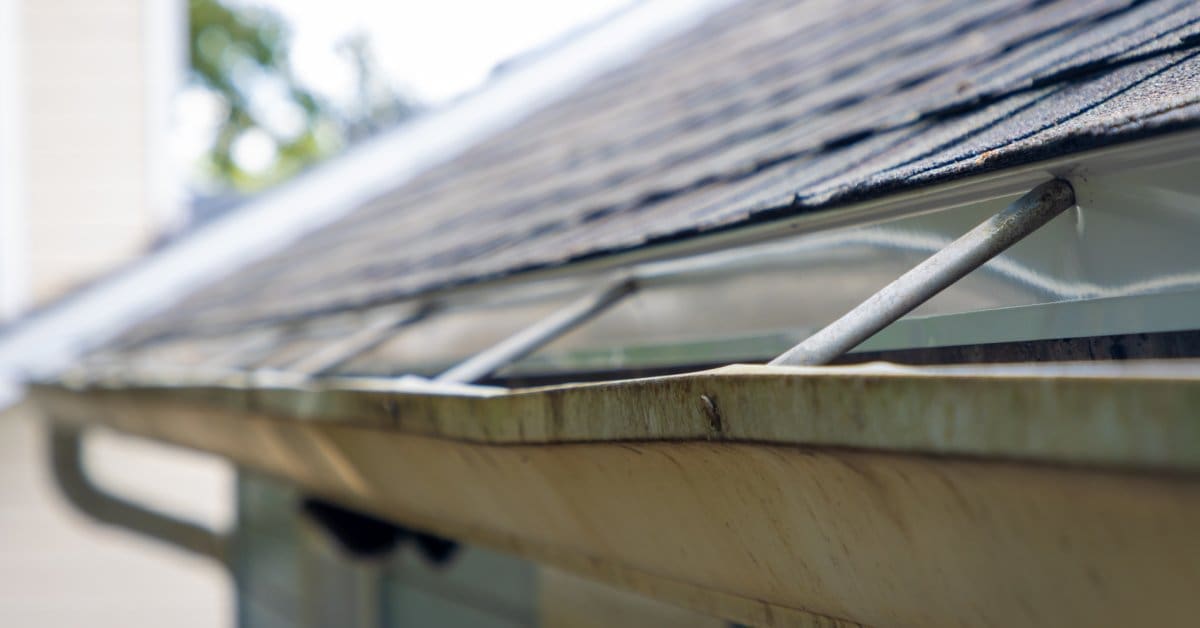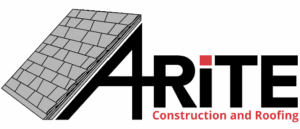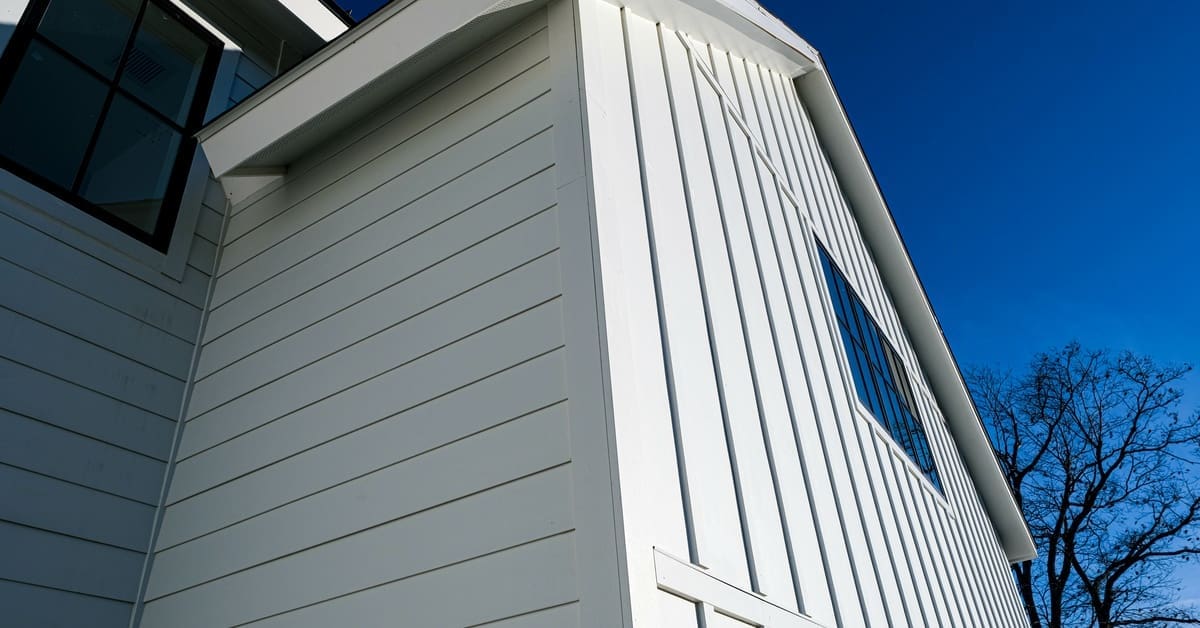Gutters aren’t the flashiest parts of the home, so you hardly notice them when they’re doing their job. It’s when they fail that problems become obvious: sagging fascia, foundation cracks, and shingle damage are just the beginning. Whether you’re dealing with a surprise downpour or the slow melt of Wisconsin snow, your home’s gutter system must keep up.
What happens when the gutters wear out? Should you patch things up, or is it time for a full replacement? The answer isn’t always clear, and choosing the wrong option can cost you down the line.
How do you know when to repair or replace your gutter system? Let’s break down the signs, the seasons, and the smartest choices you can make for your home.
What Box Gutters Do
Box gutters are built directly into the structure of the roofline. They can move large volumes of water efficiently, making them great for homes in Wisconsin that experience spring downpours and winter snowmelt.
Unlike K-style or half-round systems that hang off the roof’s edge, box gutters fit the architecture of a home. However, repairs can be tricky, notably when paired with asphalt shingles.
Because box gutters are part of the home’s structure, their performance directly affects roof drainage and siding durability. When they’re in good shape, you’ll barely think about them. When something goes wrong, it usually leads to serious issues.

When Repairs Are Sufficient
Not every gutter issue calls for a full replacement. In many cases, timely repairs can extend the life of a box gutter system and save homeowners money, especially if the underlying structure is still sound.
Here are a few signs that the gutters need a repair:
- Leaky seams or joints that drip during heavy rain
- Sections pulling away from the fascia due to loose fasteners
- Surface rust or peeling paint on isolated areas
- Minor sagging that hasn’t yet disrupted water flow
These issues are often localized and can be addressed quickly by professionals who specifically know how to work with box gutters.
If there are multiple minor issues throughout a system, it’s smart to consider bulk repairs instead of piecemealing over time. This saves on labor and ensures a consistent repair quality across the whole system. Professional gutter services in Wausau, WI, can identify whether a targeted fix or a broader repair approach makes sense and help you prevent problems altogether.
The Case for Full Replacement
Repairs are ideal when damage is isolated and when patchwork fixes become more costly and less effective than starting fresh. If the gutter system is showing widespread issues or nearing the end of its lifespan, replacement may be the better investment.
Here are some signs that replacement makes more sense than repair:
- Rust or corrosion throughout the system, particularly in areas that were previously repaired
- Improper slope or pitch causing standing water or overflows
- Recurring leaks, even after previous fixes
- Gutters that are 20–25 years old
In these cases, continuing to repair can become a bandage solution. A new gutter system restores drainage, reduces the risk of hidden water damage, and saves you from compounding repair costs.
If your home’s roof is due for a replacement, it makes sense to replace the gutters at the same time. Coordinating these two major upgrades guarantees that flashing, drainage, and roofline work are aligned, reducing labor and minimizing disruptions to the home.
Don’t overlook the return on investment! New gutters improve curb appeal, protect the home’s structural integrity, and lower maintenance costs.

How the Seasons Affect Gutters
In Northern Wisconsin, a box gutter system doesn’t get a break. Each season brings challenges, and that year-round pressure adds up. Understanding how the local climate affects gutters helps homeowners plan repairs or know when it’s time for a full upgrade.
Spring
Spring is all about melt and momentum. As snow thaws and rains arrive, the gutters face a surge in runoff. If they’re leaking, sagging, or improperly pitched, they may send water where it doesn’t belong, such as behind the siding or toward the foundation.
Summer
Summer brings its own challenges. Thunderstorms can send debris into the gutters or damage aging joints. Seed pods, leaves, and nesting pests can disrupt drainage, especially if you didn’t clean the gutters in the spring.
Fall
Fall is the most important season to check and clear out the gutters. Leaves, twigs, and roof granules can collect quickly with the seasonal shifts. If your gutter system already has weak spots, blockages could lead to overflow and water damage as temperatures start to drop.
Winter
Winter may be the harshest of all. Ice dams—caused by freeze-thaw cycles and trapped water—could form on the roof and inside poorly sloped or clogged box gutters. These icy blockades don’t just block water; they also push it under the shingles and into the roof deck, causing rot, leaks, and structural damage.
No matter the season, one thing remains consistent: neglected gutters lead to big problems. Homeowners should evaluate their gutter systems year-round and take action before a minor issue becomes a major one.
Trust a Local Expert
Deciding when to repair or replace your gutter system isn’t always straightforward. A leak might look minor, but it could be indicative of a larger structural issue. A sagging gutter in one corner might be a symptom of deeper pitch failure. If your gutters are nearing 20 years old, every storm season only increases the risk of it detaching from your home and damaging the roof, siding, or base.
That’s where professional insight makes all the difference. A professional knows what to look for and how to evaluate a gutter system as part of the broader roofing structure. They can also determine whether you’re better off with a targeted repair or a full replacement. Because box gutters require their expertise, it’s important to trust a contractor.
A-Rite Construction serves homeowners in Wausau, WI with expert inspections, repairs, and replacements tailored specifically to box gutters and asphalt or architectural shingle roofs. Whether you’re facing an immediate issue or planning ahead, we’re here to help you protect your home.




